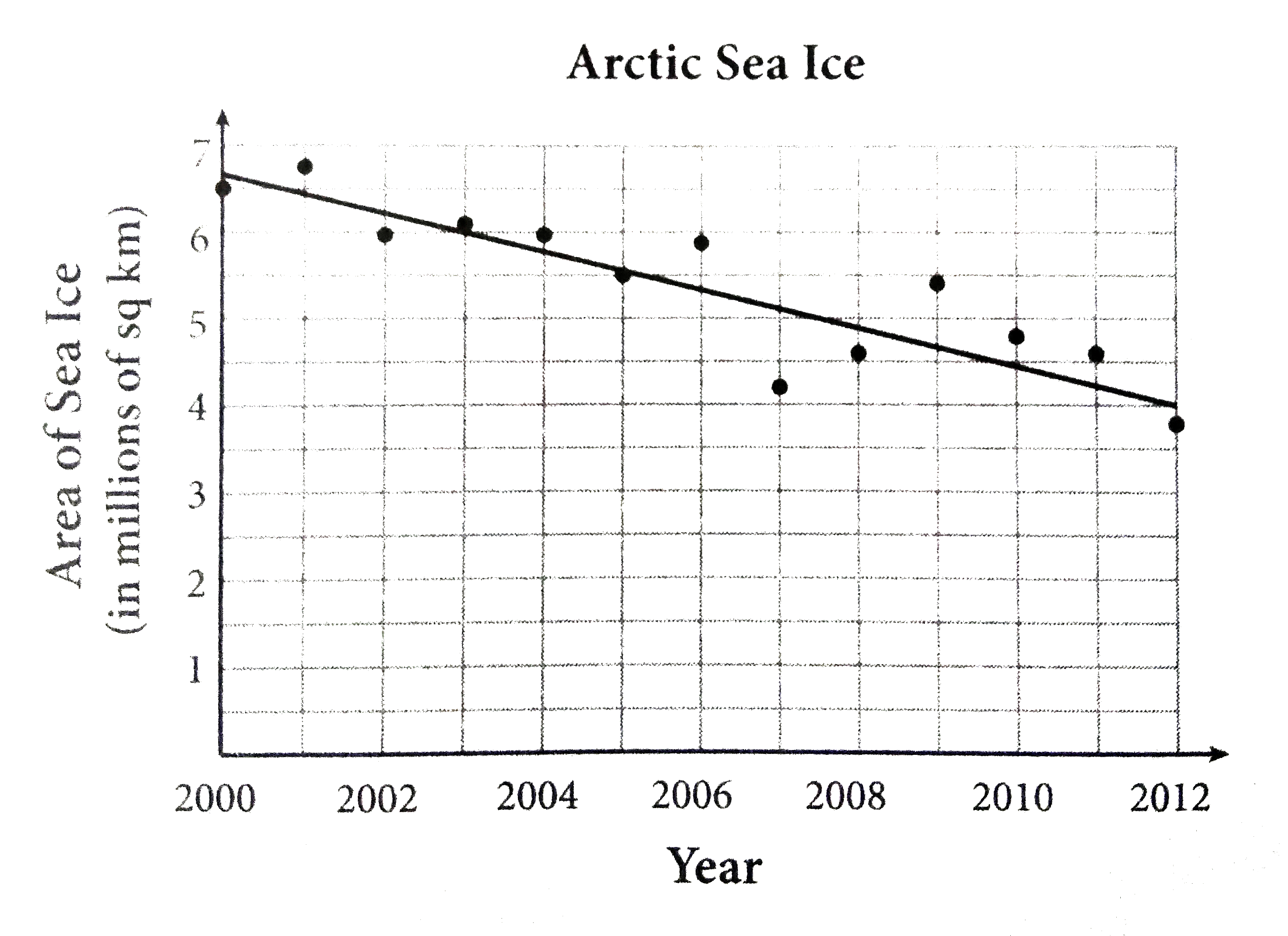Sea ice extent is a measurement of the area of ocean with at least 15% sea ice. The graph below shows data for the extent of Artic sea ice between 2000 and 2012 as reported by the National Snow and Ice Data Center. The line of best fit is also shown. The equations of the line is A(t)=−0.187t+380.5, where A(t) represents the area of measurement sea ice in the Artic Ocean in the year t.

Q. Assuming the trend of the data continues in what year will the measurable sea ice in the Arctic Ocean cease to exist?
2026
2034
2066
2380
The correct Answer is:B
Difficult: Medium
Category: Problem Solving and Data Analysis/ Scatterplots
Strategic Advice: You'll need to translate from English into Math to answer this question. The words "cease to exist" tell you that you're looking for the year (t) in which the area of Arctic sea ice will be 0.
Getting to the Answer, Substitute 0 for A(t) and use inverse operations to solve for t: A(t)=−0.187+380.5
0=−0.187t+380.5
0.187t=380.5
t=380.50.187=2034.76
Relative to time, this means about three fourths of the way through the year 2034, so (B) is correct.
Topper's Solved these Questions
Similar Questions
Sea ice extent is a measurement of the area of ocean with at least 15% sea ice. The graph below shows data for the extent of Artic sea ice between 2000 and 2012 as reported by the National Snow and Ice Data Center. The line of best fit is also shown. The equations of the line is A(t)=−0.187t+380.5, where A(t) represents the area of measurement sea ice in the Artic Ocean in the year t.

Q. Assuming the trand of the data continues, what is the predicted area, in millions of square kilometers, of measurable Arctic sea ice in the year 2020?
View SolutionSea ice extent is a measurement of the area of ocean with at least 15% sea ice. The graph below shows data for the extent of Artic sea ice between 2000 and 2012 as reported by the National Snow and Ice Data Center. The line of best fit is also shown. The equations of the line is A(t)=−0.187t+380.5, where A(t) represents the area of measurement sea ice in the Artic Ocean in the year t.

Q. Based on the equation of the line of best fit, which of the following statements accurately of measurable Arctic sea ice during the given times period?
View Solution
Knowledge Check
Melting of ice into water is a
Achemical changeBphysical changeCirreversible changeDperiodic changeThe temperature of pure melting ice is :
A0∘CB100∘CC95∘CD98.6∘F
